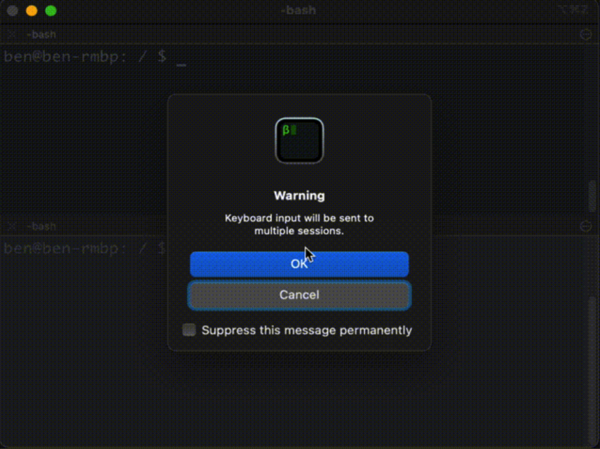Mugo Partner since 2023
Collingwood Public Library’s new website triples site visits and dramatically improves patron usability
Collingwood Public Library’s (CPL) website needed an upgrade. Not only was the interface hard to navigate, but it was outdated in terms of accessibility and features. The library knew that they had a hard deadline to meet conformance with AODA standards, and their current site was not flexible enough to make the needed changes. It was time for a fresh start, to rethink their website from the ground up to better support the needs of their community. “We were not meeting the online experience expected by the public in a post-pandemic world, and knew we needed to improve,” reported Ashley Kulchycki, CPL CEO. “We needed to make ourselves more viable. We were falling short by a long shot with our old website, and seeing what our peers were up to in other libraries, we knew we needed to catch up.”
With a project of this size, they knew it was going to have to go out to RFP. The library assembled a team to determine what they wanted out of a new site. Once all the proposals were in, Mugo Web was the successful bidder to partner with them and create a new library website. The new site was developed in the last half of 2023, and launched in December of that year. Immediately, the library saw a dramatic increase in usage of the site, doubling its previously highest recorded usage that year. The month following the launch, website usage nearly tripled compared to the highest month of usage on the old site.
From the start, CPL knew they wanted to capture the unique nature of their community and library in the design of the new site. Tianna Kwong worked with library members to identify elements that would help the new site feel familiar to users while creating a fresh experience. The library team was very intentional about their choices and inspirations. “It was like designing a home… I loved picking a font, and colours, and thinking about the feel we wanted for the site,” said Kulchycki.
The final design was a colourful and welcoming experience that echoed CPL’s brand. Special attention was paid to making sure each element was fully accessible, and part of the design process included making special templates to help library staff maintain accessibility with new content like banners. The final touch was the staff adding welcoming images to help draw users’ attention to helpful areas like FAQ links.
The new features of the CPL Library site were also designed to make the patron experience more fluid and easier to navigate. CPL staff worked together to audit their content and decide what would be migrating to the new site. They were also helpful in expanding ideas for new Mugo Library features, such as the meeting room management system.
CPL was the second library to adopt the meeting room management feature developed by Mugo. The feature allows library patrons to see the availability of different public spaces in the library and request reservation times for those resources.
A booking request is sent to administrators in the backend, who can approve, deny, or move locations of the requests. Communication regarding those steps is automated – patrons and staff get emails with confirmations of requests or any changes.
The backend of the system has different views based on the level of access for staff. Desk staff can see the calendar with the patron details to assist with access to the room or answer patron questions. Programming librarians can see the calendar and can book spaces for events beyond the set patron limits, and with a simplified process.
CPL staff helped Mugo’s development team further shape the functionality of this backend process. With their input, developers added a feature for programming librarians to book recurring events in a single step, with logical rules to help manage possible conflicts in patron bookings.
CPL also found the functionality of the feature to fit resources beyond just room bookings. Each resource can have separate landing pages, with customized calendars, forms, and content. CPL staff used this to add services and features related to room use (such as exam bookings) on the same landing page.
Another feature getting a lot of use by CPL is the custom forms built into Mugo Library. These have allowed CPL staff to streamline several processes and better engage with patrons. Whether it’s suggesting a title for purchase, joining their Books on Wheels program, or adopting a book club kit, patrons can easily submit feedback and requests without having to leave the site. The form goes directly to the email of the selected librarian for follow-up. “We’re using a lot of the custom forms,” Kulchycki shared. “We had used Google forms previously, but this is more private for patrons, more secure. We can target which staff member receives these forms instead of going through a general email that may get forwarded multiple times.”
Integrating with CPL’s SirsiDynix Integrated Library System (ILS) required a good deal of collaboration between library staff and Mugo developers. CPL shares access to their ILS with other partner libraries, which means several levels of communication and permissions had to be navigated. Several options for how the integration could be implemented were explored, and the result is a system where library staff can build booklists directly in the CMS by adding the ISBN. The CMS pulls the image and links to the resource from the ILS. Staff can create booklists to be added to pages on the site. They’ve used this to highlight different parts of the collection.
“I love that the booklists are browsable and have a call-to-action,” said Jennifer Perks, Supervisor of Community Services. “[A staff member] was looking at our Black Voices booklist. All the items had circulated. The feature of being able to put an item on hold from the list has been helpful and helped our collection move.”
Mugo Library’s customizable widgets on the homepage have also helped CPL staff showcase their services in a more discoverable way to patrons. Site administrators can easily change banners, or even move elements around the page with simple drag-and-drop tools. “The booklists and hero banner are my favorite parts,” said Perks.
These features were design elements the team ended up investing time in, to determine the best options for usability and accessibility. Instead of using a traditional slider or carousel, it was decided to focus on a main feature image with callouts below. Both types of assets can be easily changed and ensure that important information isn’t buried in slides that may or may not be seen by users.
“I didn’t think I would like not having scrolling images,” Perks continued, “but it’s refined the user experience, and it’s made me more intentional about what I’m promoting on the home page. It has a better effect on our users and patrons.”
Part of the early design of the new site was a homepage element that featured a selected event in addition to the automatically selected upcoming events. “It’s a new avenue to reach patrons,” Leigh Ann Epp, Public Relations Coordinator said. “I like the fact that it pulls the most recent event with an image, and you don’t have to think about that. The programmers have all the information in one spot, one stop access. As far as marketing, the calendar alone has been very helpful.”
Gordon Palmer, Technology Coordinator agrees. “Being able to display the events on the home page helps get our stats up and bring people in for programming.”
Palmer goes on to discuss the event calendar features, where patron usability was a key factor in design and implementation. “Being able to filter makes it easier to find what we’re looking for.”
The added features do come with some growing pains for the library, but the results are worth it. “We’ve been rethinking how programmers schedule events. It adds a level of complexity, but it’s a new system we are navigating, different from what we used to have, but we’re still learning,” Palmer said.
Kulchycki adds, “We’re still learning about all our new features and have to remember we have these tools to use, like variable hours, and banners.”
With strong staff adoption and reactions to the new site, it remained to see if the new design, features, and focus on usability would make a difference to patrons. Initial reports are already showing a significant difference in how the library’s site is accessed. “Analytics show the story of how the community is using [the new site],” says Kulchycki.
Prior to the launch of the new site, the highest usage the Collingwood Public Library saw in 2023 was approximately 14,000 users in one month. In December 2023, when the new site launched, 30,000 users visited the site. While a new website is expected to garner fresh visits and attention, the more encouraging numbers followed in January, a typically quiet month following the holiday season. However, site usage increased exponentially this January with an impressive 41,000 visits. “To get that number in what is often a quiet month is hopefully indicative of a trend we want to keep seeing,” Kulchycki said.
With Gmail and Yahoo now requiring bulk emailers to implement authentication protocols, making sure you understand the differences between SPF, DKIM, and DMARC and how they work together is essential for your email marketing efforts. We'll walk you through how to set these up in your email provider of choice.

While YouTube embed options are powerful and effective, they are not always the most efficient use of resources when it comes to bandwidth. Using a facade can help decrease page load time and increase site performance without sacrificing any of the utility of the native YouTube embed options.

Generative AI is shaking up every category of knowledge work, and professional software development is on the front lines of the revolution. With new advancements on the horizon, what does that mean for developers in the here and now? Our team experimented with a few of the leading tools and shared their impressions, along with suggestions on best practices for navigating AI usage in web development.

Typing the same instructions into multiple terminals at the same time is a great trick when you have a group of servers that have the same or similar configurations.

WordPress has a flexible and robust ecosystem for creating a wide variety of websites. But when your site needs to grow and expand functionality, having a dedicated, experienced development team to support and build out new features is essential. Learn about Mugo Web’s best practices when it comes to developing in a WordPress environment and see how we’ve helped save clients thousands of dollars with innovative solutions.
Getting the most out of your WordPress site can take some work. You want a site that looks great, loads quickly, and provides a good user experience for visitors. Unfortunately, WordPress sites often struggle with optimizing images, which can cause significant delays in load time and produce sub-optimal experiences for users on mobile devices. With a little effort, you can create responsive images and drastically improve your site’s performance, both for users and search engines.

There's a lot your website needs to communicate to users. When you have crucial information you don't want people to miss, an announcement banner can be a useful way to prioritize that information on your site. While this can be a simple solution, there are several use cases to consider when implementing site-wide banners. Working with our library partners, we've developed a full range of features to help deliver information quickly, effectively, and painlessly for both the front-end user and the back-end administrator.
Monitoring your web infrastructure is key for several reasons. It enables you to gain insights into the performance and health of your resources, identify potential issues, and make informed decisions for optimization. AWS offers a comprehensive monitoring solution through Amazon CloudWatch, which provides built-in metrics and the flexibility to create custom metrics. However, while comprehensive, the free monitoring options available still might not always meet your needs, and upgrading to the next level of configuration might be overkill and drive up your hosting costs. Auditing and customizing your CloudWatch infrastructure is a great way to get the metrics you desire and save money along the way.